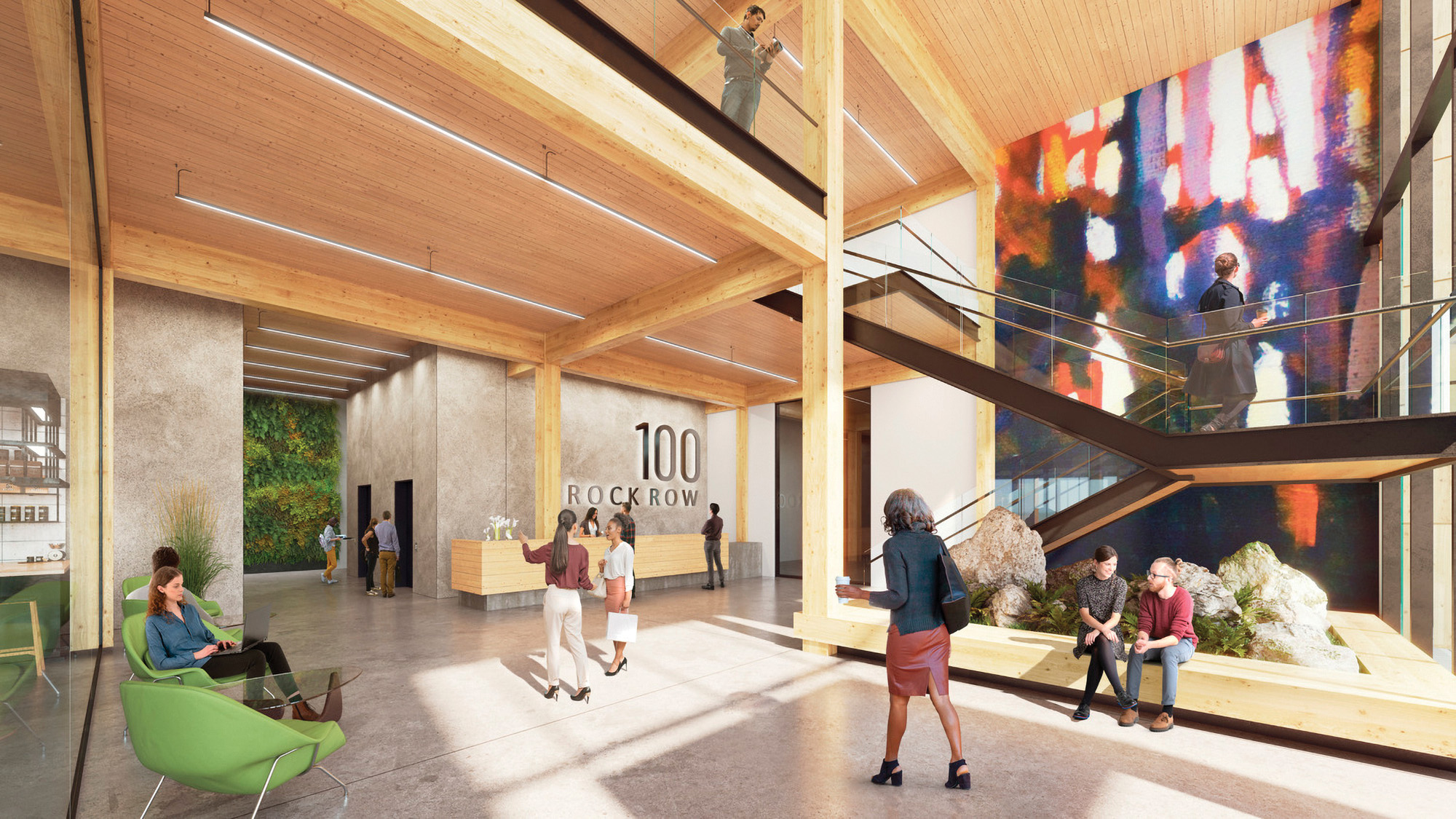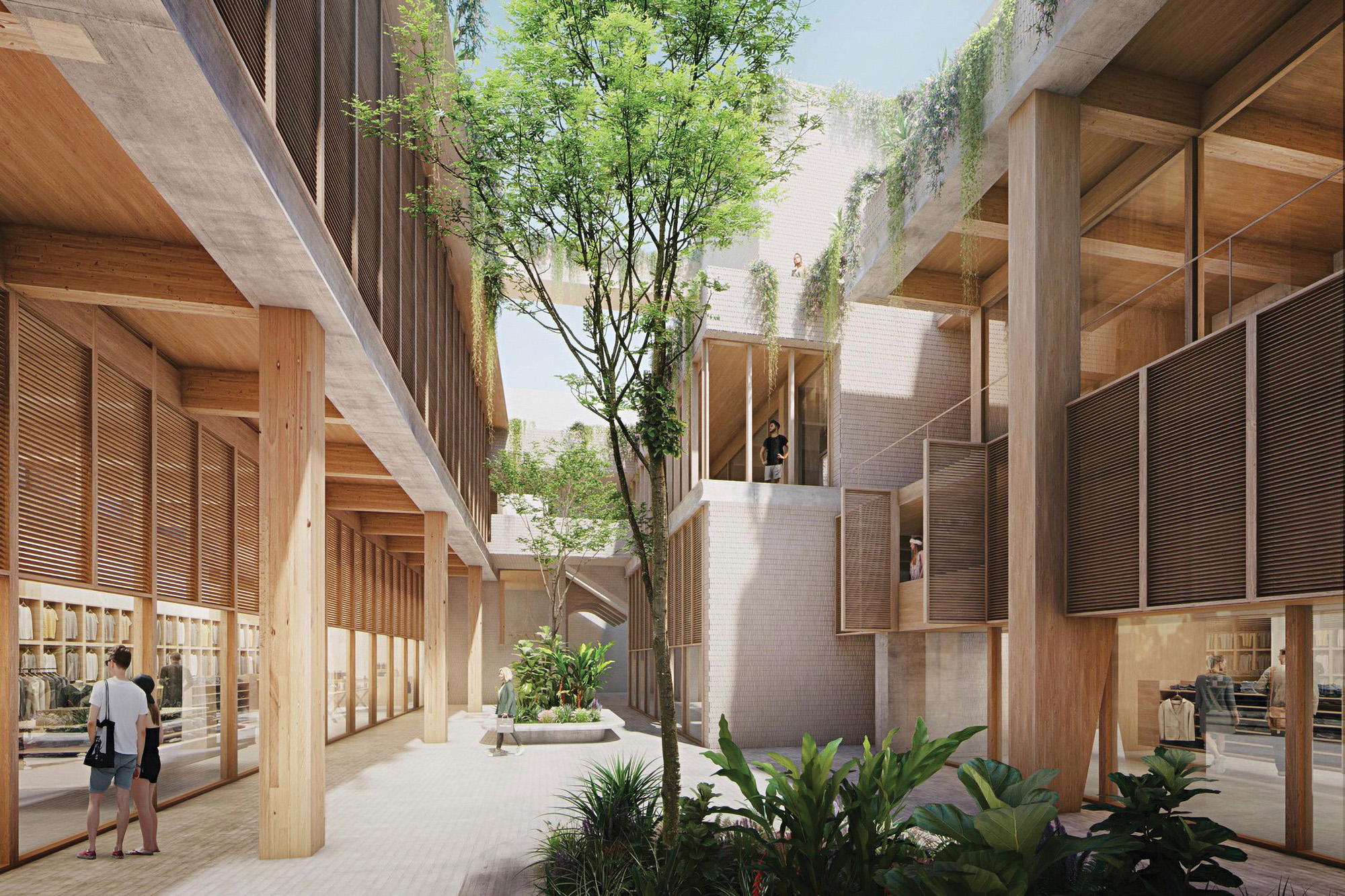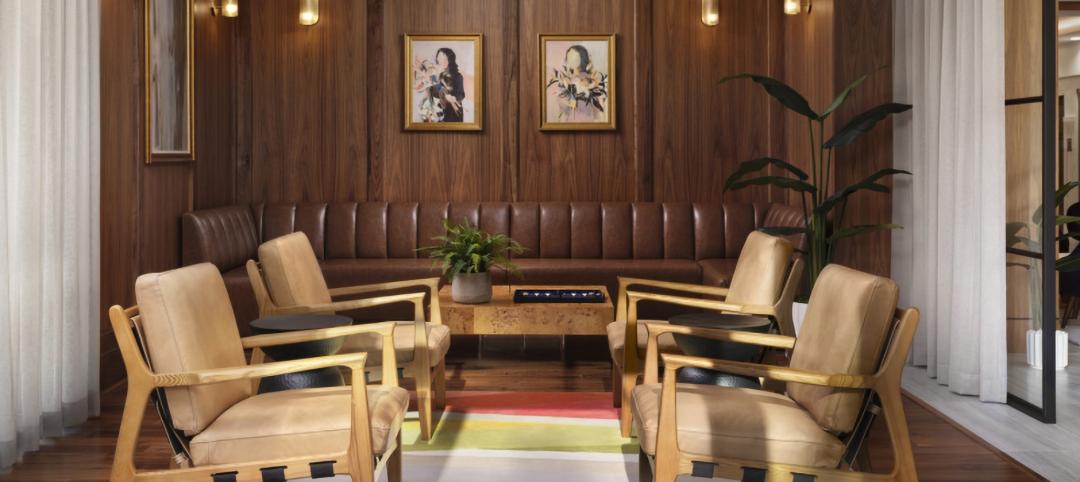Mass timber is a materials and design approach that holds immense potential to transform the future of the commercial building industry, as well as our environment. The term refers to the use of advanced techniques to combine wood products in various layer formats to create structures that are strong and versatile.
This can be done multiple ways: gluing, nailing, or doweling. Mass timber serves as a low-carbon alternative to steel and concrete, with cross-laminated timber (CLT) and glulam being popular examples of contemporary mass timber products.
As a proponent of innovative design practices, Page is using mass timber for 100 Rock Row, an eight-story office building in Westbrook, Maine; and Sixth & Blanco, a five-story mixed-use development in Austin’s Clarksville neighborhood. 100 Rock Row is Maine’s first mass timber structure, striving to improve the wellness and productivity of its tenants by delivering 30% fewer carbon dioxide emissions. At Sixth & Blanco, Page serves as executive architect alongside Swiss firm Herzog & de Meuron. Mass timber will minimize the development’s carbon footprint and enhance its long-term strength and sustainability.

Here, discover a few exceptional benefits of mass timber design in construction.
1. Mass Timber Provides Fire Safety
Wood possesses unique fire-resistant properties. By leveraging its fire-resistant nature, CLT can be safely employed in taller structures. The International Building Construction Code recognizes the proven safety of mass timber and permits these structural types up to 18 stories. They undergo fire tests to determine the structural capacity lost per hour.
2. Enhanced Construction Capability
The prefabricated nature of mass timber components contributes to the ease and efficiency of construction, enabling quiet, fast, and clean jobsites. The controlled manufacturing environment and use of Computer Numerically Controlled (CNC) technology ensure precise fabrication, with pre-cut openings and predetermined assembly and fastening methods. This significantly reduces on-site labor and speeds construction.

3. Shallower Excavation
Compared to concrete, the lighter weight of mass timber reduces foundation requirements, resulting in shallower excavations and potential opportunities for vertical expansion of existing buildings.
4. Biophilia and Improved Human Health
Studies have shown the innate human affinity for nature positively influences behavior. Access to green spaces in affordable housing complexes reduces instances of domestic violence by approximately 25% compared to those without such access. Natural materials, especially wood, in interior spaces have a calming effect, lowering heart rates and activating the parasympathetic nervous system.
5. Agri-Business and Diverse-Species Forests
Mass timber construction advocates consider it part of a regenerative building industry. This supports the diversity of forests, which is crucial as monocultures of tree species do not foster long-term ecosystem health.

By embracing mass timber construction, we unlock numerous benefits beyond its capacity for carbon storage, inherent beauty, and renewability. To fully realize these advantages, designers prioritize responsible materials management and future disassembly and reuse. Responsible CLT construction can lead to healthier forests, soil, water, and air, all while enhancing the beauty of our buildings and satisfying our desire for connection with one another and with nature.
More from Author
Page | Sep 18, 2024
Modernizing dental schools: The intersection of design and education
Page's John Smith and Jennifer Amster share the how firm's approach to dental education facilities builds on the success of evidence-based design techniques pioneered in the healthcare built environment.
Page | May 2, 2024
Emerging considerations in inclusive design
Design elements that consider a diverse population of users make lives better. When it comes to wayfinding, some factors will remain consistent—including accessibility and legibility.
Page | Feb 21, 2024
University design to help meet the demand for health professionals
Virginia Commonwealth University is a Page client, and the Dean of the College of Health Professions took time to talk about a pressing healthcare industry need that schools—and architects—can help address.
Page | Nov 22, 2023
How is artificial intelligence impacting data center design?
As AI is reshaping how we interact with machines and the world around us, the design of data centers needs to adapt to this fast-changing landscape. So, Page pairs expert thinking with high-performing solutions to meet the needs of rapidly advancing technologies.
Page | Sep 5, 2023
Optimizing interior design for human health
Page Southerland Page demonstrates how interior design influences our mood, mental health, and physical comfort.
Page | Aug 4, 2023
Anatomy of a model apartment
Page’s interior designers curate model units that harmoniously cater to a range of users, allowing visitors to see a once-empty room as a place of respite and a home.
Page | Jun 16, 2023
Cogeneration: An efficient, reliable, sustainable alternative to traditional power generation
Cogeneration is more efficient than traditional power generation, reduces carbon emissions, has high returns on the initial investment, improves reliability, and offers a platform for additional renewable resources and energy storage for a facility. But what is cogeneration? And is it suitable for all facilities?
Page | Jun 14, 2023
Designing higher education facilities without knowing the end users
A team of architects with Page offers five important factors to consider when designing spaces for multiple—and potentially changing—stakeholders.















